Date Posted: 06.27.2019
At Mithun, we are committed to design’s ability to anticipate and address the challenges of the future. Through our projects, we seek to answer questions that maximize project potential while helping advance the profession. In this spirit of reflection and aspiration, we asked leaders to share some of the latest trends being incorporated in our work across markets and disciplines. Here’s what they had to say.
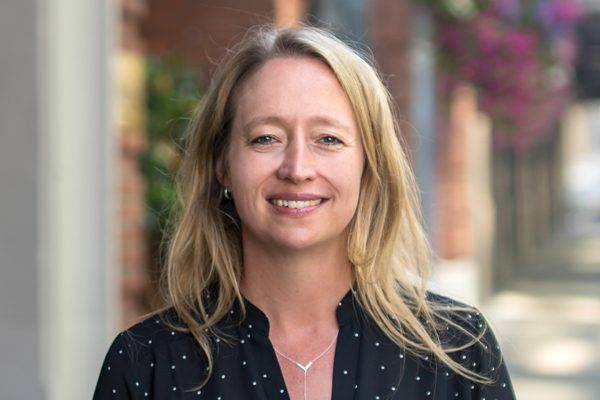
LYNN MCBRIDE ON HOW PERFORMANCE METRICS STRENGTHEN DESIGN
In her 21 years with Mithun, partner Lynn McBride has managed the design of diverse higher education projects including new student housing communities at UC San Diego and the University of Oregon. With close to 5,500 undergraduate and graduate housing beds currently in development, she plays an important role in Mithun’s work with integrated living and learning environments. What are the latest advances in student life?
“We are increasingly leveraging Design Analytics to study projects from the perspective of students, faculty and staff to drive project success. Our teams are engaged with both pre- and post-occupancy studies, gaining knowledge of existing pre-design environments as a baseline, understanding what components may be missing, addressing these items in our design process, and then checking back in after project completion to understand the outcomes,” shared Lynn. “In our recent work at UC San Diego Mesa Nueva, we heard from students that the project design supports wellness through welcoming stairways and discrete placement of elevators. They also reported that our design enhances community through outdoor gathering areas with BBQ grills and ping pong, and indoor spaces such as the Rough Draft Brewing pub and common study lounges.”
“Sustainable design also drives our education work. Working at the neighborhood scale, Mithun teams are working with universities on comprehensive transportation management plans that demonstrate a quantifiable reduction in personal automobile use. In support of student wellbeing, we’re creating health-positive environments that promote physical activity, strengthen community and allow for respite, connecting to integrated landscapes and places of rest. In terms of performance, our living and learning projects are consistently exceeding energy usage goals—beating Title 24 by more than 20%, even 30%!”
Speaking of energy, Lynn loves to expend extra energy with her twin ten-year-old daughters; playing volleyball with the famous Mithun volleyball team, The Fog; and wandering through Discovery Park, taking in the beauty of our local Pacific Northwest surroundings.
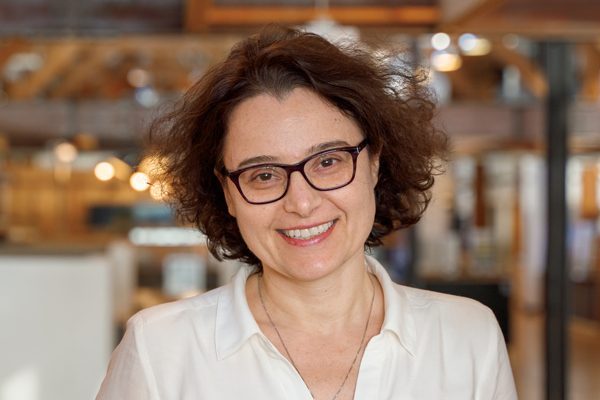
LANA LISITSA ON NEXT GENERATION DESIGNERS
Mithun partner Lana Lisitsa is an adept project manager with 22 years of experience in complex commercial/office and education projects. When asked about what excites her about current work, she immediately turned to the amazing people with whom she works every day.
“In addition to working on some amazing educational and commercial projects with truly incredible clients, I often feel inspired by the new generation of Mithun team members. There has been a lot of millennial bashing among professionals of my generation. As someone who leads project teams, I’ve been fortunate to work closely with many talented, smart and collaborative young Mithunees,” explained Lana. “The newest arrivals trained in our coLAB produce jaw-dropping 3D visualizations that enable our clients to step into projects before they are built and to advance their fundraising efforts, as we’ve recently seen on the Seattle University Center for Science Innovation project. It’s easy to envision this new generation of architects, landscape architects and interior designers growing into leadership roles here at Mithun and in the broader community.”
What keeps Lana energized and growing? “I love cities and get my batteries recharged during my daily commute on foot. The return of workplaces and residential development to the city has given us a chance to work on many urban projects and to shape the pedestrian experience. Every project that touches a sidewalk—whether it’s a transformational building such as the Weyerhaeuser Headquarters at 200 Occidental or a neighborhood park—is an opportunity to make our cities more enjoyable, equitable and vibrant.”
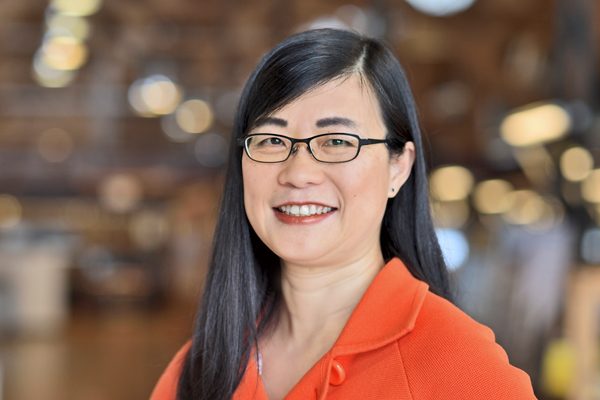
CASEY HUANG ON INNOVATIVE APPROACHES TO AFFORDABLE HOUSING
Principal Casey Huang has brought a strong contextual approach to the planning and design of affordable and workforce housing projects during her 25 years with Mithun. She’s a leader within the firm’s affordable housing practice and also serves as Vice President of the board of Seattle Chinatown International District Preservation and Development Authority (SCIDpda). She notes that increasing pressure on housing affordability throughout the West Coast is driving new models and innovation in residential markets.
“An important trend in the Seattle area is the increase in affordable housing units being created for families with children—a critically underserved population. At our current project in the Yesler Terrace neighborhood, 120 out of 192 units (62.5%) are family-sized units, including two-, three- and four-bedroom units. The design provides high quality family-sized and family-friendly housing and thoughtful amenities for large families. A large courtyard space offers gathering space, children’s play area, community garden and landscape elements. A light-filled lounge is provided on every residential floor for gathering and indoor play. Wider corridors provide kids impromptu play areas and space to ride tricycles indoors on rainy days.”
“I’m also excited by new partnerships driving affordable housing development in our cities. A great example is the Liberty Bank Building, which opened this spring through the dedication and support of many community members and organizations with deep roots in Seattle’s Central District. This joint effort has been hailed as a template for inclusive development, thanks to the groundbreaking agreement between the partners to use the site development to address gentrification and displacement head-on, and maximize empowerment of the African American community. It’s an incredible success story and community asset!”
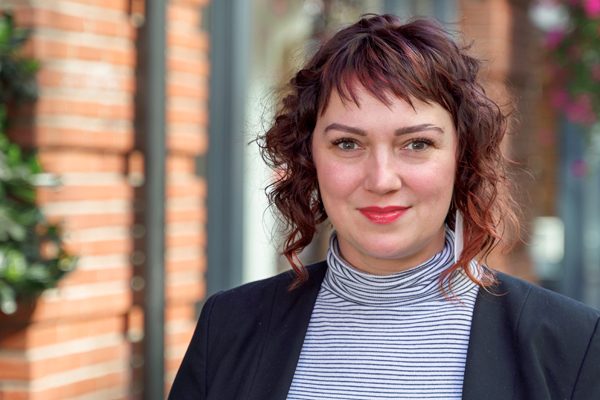
ELIZABETH GORDON ON ACHIEVING WORKPLACE BALANCE
With a passion for creating innovative design solutions that merge client needs with programmatic requirements, principal Elizabeth Gordon has led the design of numerous corporate workplaces for confidential Fortune 100 companies in Silicon Valley and the Pacific Northwest. She is currently working on more than a million square-feet of new workplace environments! Elizabeth discussed her experience working with companies to support employees in a much more holistic way.
“For years, workplaces have been designed with an eye on enhancing team collaboration, but in some cases this was to the detriment of individual focus. In our current work we’re achieving a balance through careful planning strategies and diverse environments for work. It’s not a one size fits all solution for any person or any day—individuals move between focused work, interpersonal conversation, and larger group activities over the course of a day,” explained Elizabeth.
“We’re also seeing a huge focus on wellness. Projects like our Sunnyvale Workplace for Technology Engineers encourage movement between floors via stairs, feature spaces that provide opportunity for chance encounters to promote human connection and collaboration, and incorporate amenities such as meditation rooms and safe spaces to support mental health.”
How does Elizabeth cultivate creativity and decompress between busy work weeks? “One of my favorite ways to recharge is to explore new places. In the summer months, I love to take short day trips with my husband and teenage daughter. One of our favorites is to explore Chuckanut Drive and picnic at Taylor Shellfish Farms. The natural beauty of the Pacific Northwest is an endless source of inspiration.”
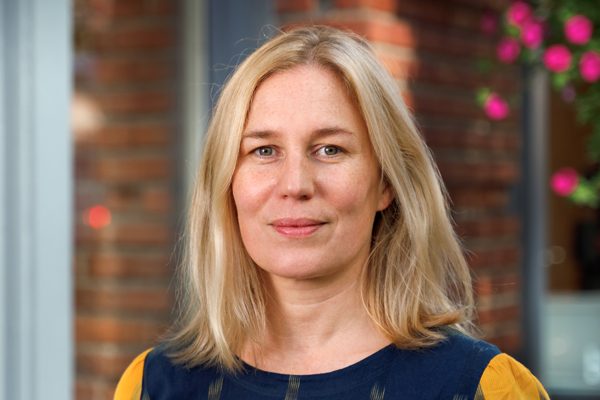
DOROTHY FARIS ON OPEN SPACE AS A COMMUNITY LIVING ROOM
Principal Dorothy Faris is a skilled landscape architect, working closely with Mithun’s integrated design team and project stakeholders to seamlessly blend site, structure and community. She has contributed to the success of influential urban housing projects, university student life developments and planning studies. Thinking about community impact over the past year, Dorothy has been particularly energized by the opening of vibrant mixed use communities with significant open spaces.
“It is really exciting to see designs come to life after years of involvement, and incredibly rewarding to witness how they contribute to the evolving character of their respective neighborhoods. Our landscape team, along with the rest of the integrated design team, enhances placemaking and human connection with expanded spaces for outdoor recreation, more welcoming pedestrian experiences and artful, welcoming, civic spaces with inventive stormwater mitigation—like the public courtyard at Heartline in Portland’s Pearl District. We always talk about the transformative power of design, but seeing it in action, and seeing the transformation beyond the limits of the project scope, is thrilling!”
Now that warmer weather is here, we asked Dorothy for her top pick among urban open spaces. “In the summer, my favorite weekend space is Lake Washington. I always enjoy seeing how many people come out and engage around the shores of the lake, enjoying the views and each other’s company. I grew up in Oklahoma, so being able to easily access a large body of water at the city’s edge, and swim or paddleboard with views of snowcapped mountains, still bewilders me.”
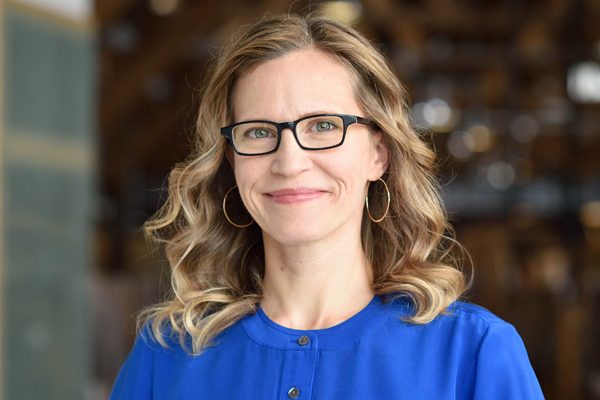
HEIDI OIEN ON THE NEXT CHAPTER OF WORK/LIVE UNITS
With a passion for vibrant cities and a belief that excellent design should benefit all, principal Heidi Oien has focused her career on the urban realm. During her 21 years of practice as an architect and urban designer, she has led a range of projects that catalyze neighborhoods. The past few years, Heidi has been working on large-scale mixed-use residential projects that strive to create a great pedestrian environment around and through the block. Her response reflects that focus.
“Active uses, like restaurants and retail, create the best vitality on a sidewalk because they generate foot traffic and great people-watching opportunities. But there’s usually a limit to how much retail can be successful. For this reason, several of my recent projects incorporate “Work/Live” units into a portion of their ground level, aiming to generate other types of active uses. We pay careful attention to locating the living space and kitchen on the upper floors so that a resident maintains privacy while also displaying the ‘work’ portion of their unit without closing their blinds. There’s nothing more bland in an urban environment than closed blinds!” exclaimed Heidi.
“This is a practice as old as stores themselves and updates a tradition of shopkeepers living above their shops. The idea is proving to be effective at Arras in Bellevue’s Spring District, and we’re currently designing them into projects in northeast Portland and elsewhere.”
What is Heidi’s favorite neighborhood for walking? “I love Boston’s Back Bay—in particular, the way new uses occupy an old urban fabric. It’s incredibly dense and vibrant, with Frederick Law Olmsted’s fantastic Emerald Necklace park system.”